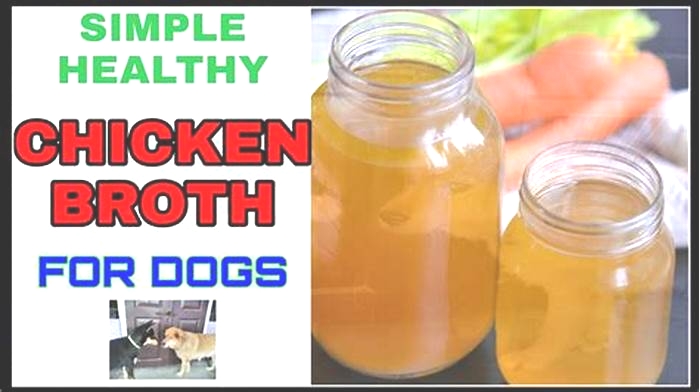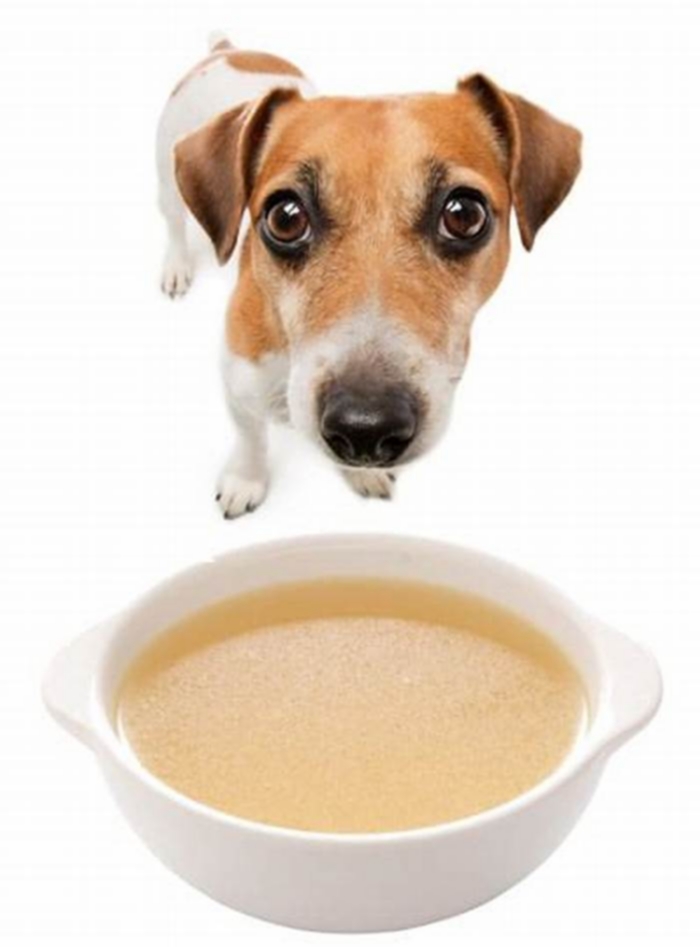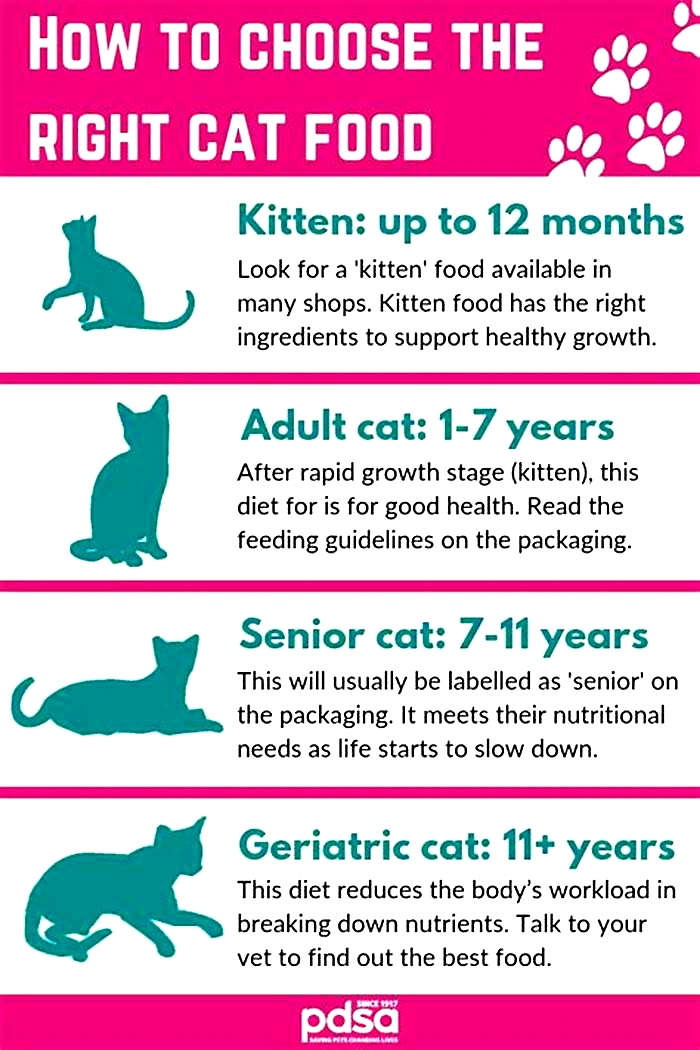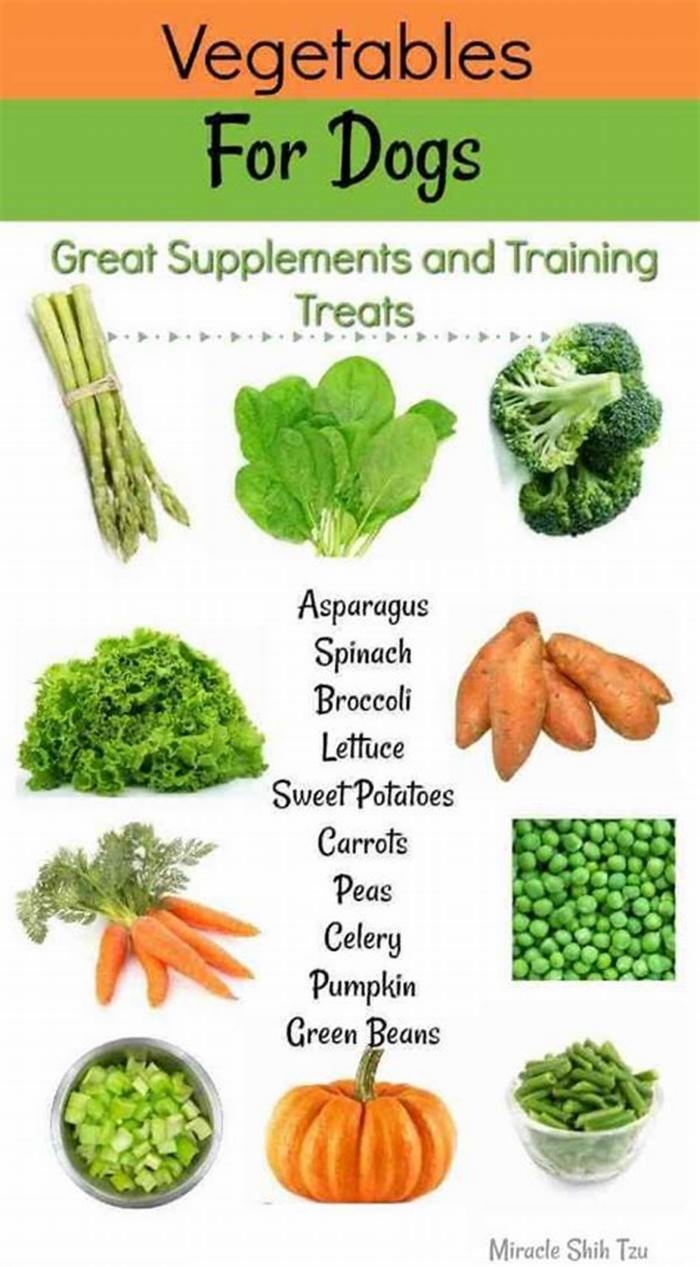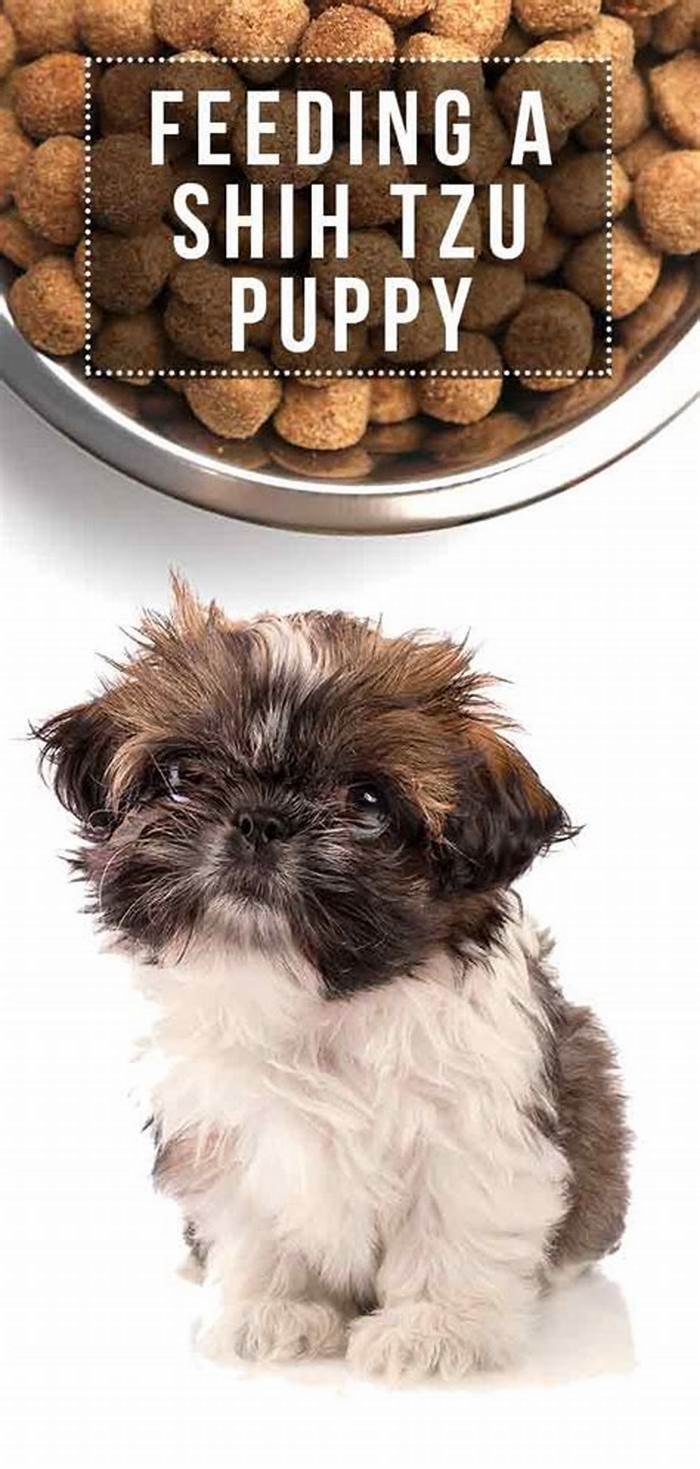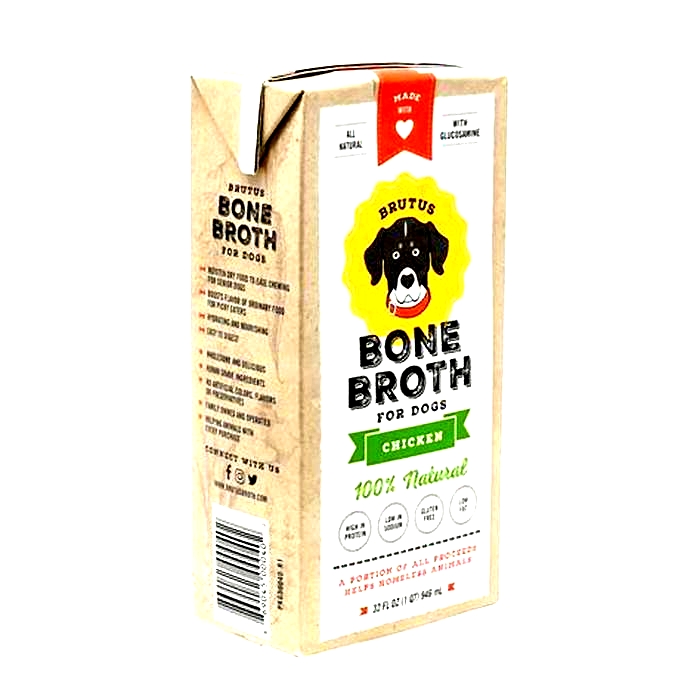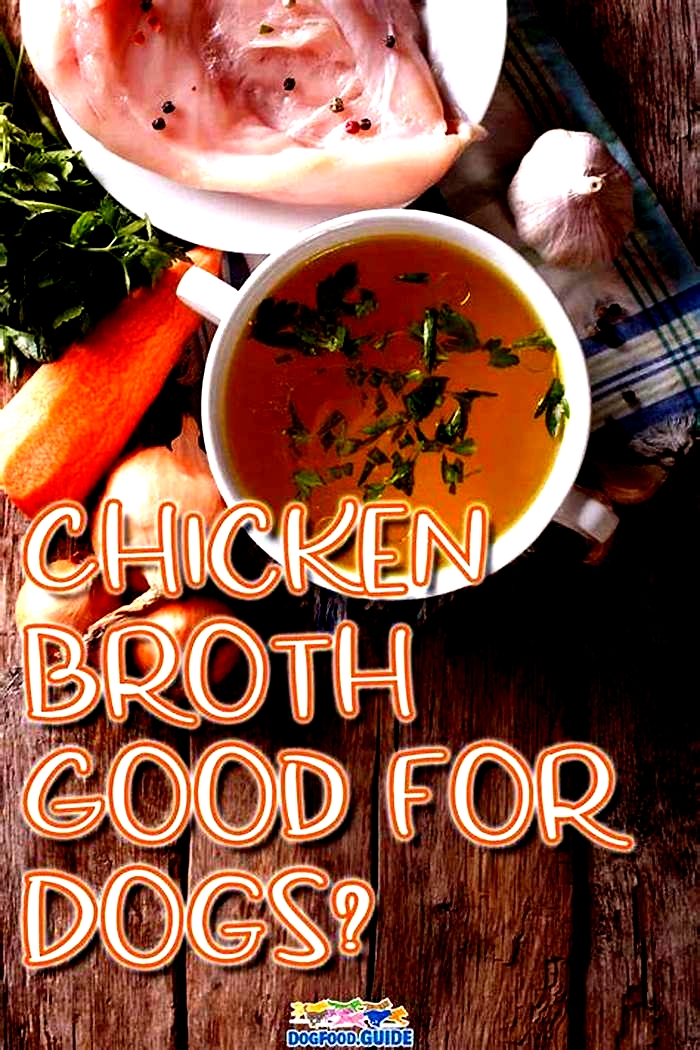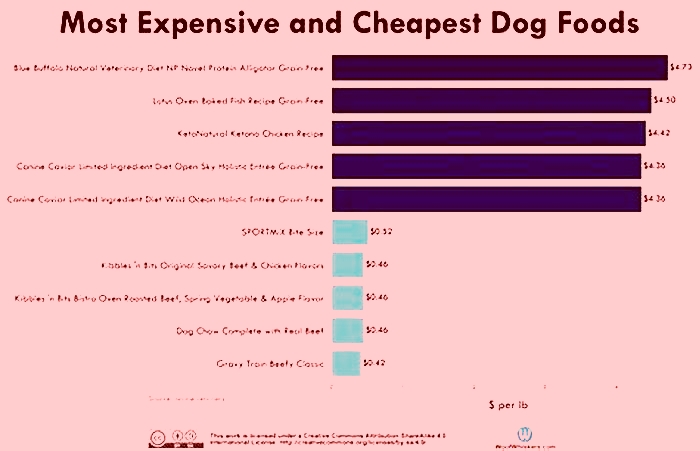What kind of broth do you put in dog food
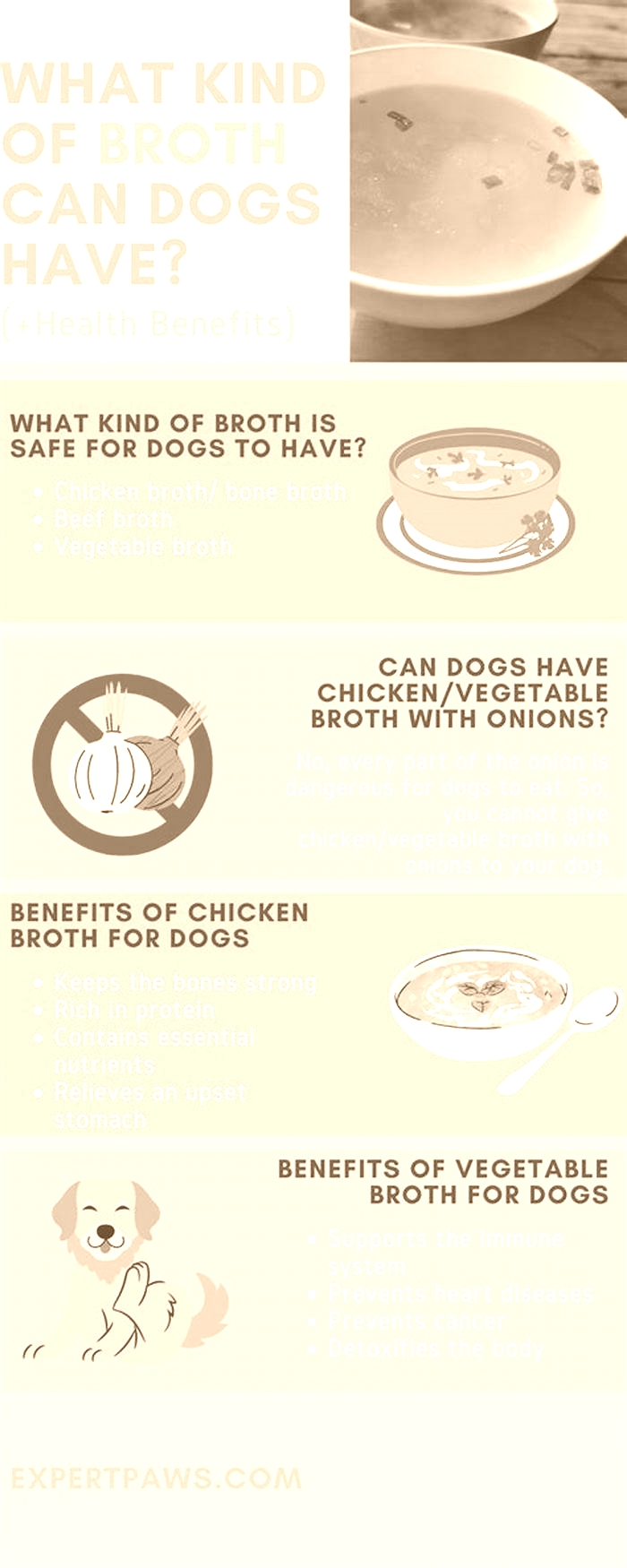
Can You Put Chicken Broth in Dog Food?
Chicken broth has its uses and appeals, but chicken stock is better as a tasty and relatively inexpensive way to add flavor and liquid to your dog's diet. Make it yourself and keep it on hand to spark up Rover's meals, and your own, too.
Broth vs. Stock
Chicken broth is a thin, clear liquid made by simmering raw chicken white meat in water. Stock, on the other hand, is a rich, almost viscous brew made from roasted chicken parts -- especially the feet, if you can get them -- and vegetables, such as carrots and celery. Broth stays liquid when refrigerated, while stock jells. The difference is collagen, a protein extracted in the cooking process from the cartilage in, on and around the chicken's bones. Buy whole chickens and cut them up yourself, saving the necks, backs and wingtips in the freezer until you have enough to oven-roast a batch; these parts are loaded with cartilage, and making stock with them is a way to avoid wasting valuable nutrients.
Which For What?
Chicken broth is good for dogs who are dehydrated or having diarrhea. It's basically chicken-flavored water, and the taste may encourage them to drink. Cook white rice in it to make a bland diet to tempt any dog who is off his feed because of an upset stomach. Add a little chopped or shredded chicken meat to advance the diet as he recovers. Use chicken stock to moisten kibble and increase a dog's protein intake; a cup of homemade chicken stock contains about 6 grams of protein.
Salty Sodium
Dogs need about 250mg of sodium a day. This includes what is in their food, water and treats. One cup of canned chicken broth contains 970mg of sodium. One cup of reduced-sodium canned chicken broth contains 450mg. Three ounces of roasted chicken dark meat contains 79mg and white meat only 43mg. These numbers make it pretty obvious that making your own chicken broth or stock allows you to control the amount of sodium your dog gets. Too much sodium can cause excessive thirst and diarrhea, so very salty chicken soup given to a sick dog can actually aggravate his problem.
Seasoning
Instead of adding salt to your homemade broth or stock, try using herbs to boost the flavor. Dried herbs work well, but with very little effort you can turn an unused spot in a flowerbed to grow your own. Herbs are hardy and need little tending, and they really brighten up foods. Some that go particularly well with chicken are marjoram, basil, thyme, sage and tarragon. Skip anything in the onion family, such as chives, leeks or shallots, which are toxic to dogs.
Homemade Dog Gravy
Homemade Dog Gravy is a tasty dog food topper. This healthy dog gravy is made with chicken or beef, vegetables, and stock. DIY dog gravy is great for picky eaters and dogs with low appetite.
This is the perfect thing to add to your dogs dry food so they eat it up. Your furry friend will love how it tastes and youll enjoy how easy it is to make this simple recipe.
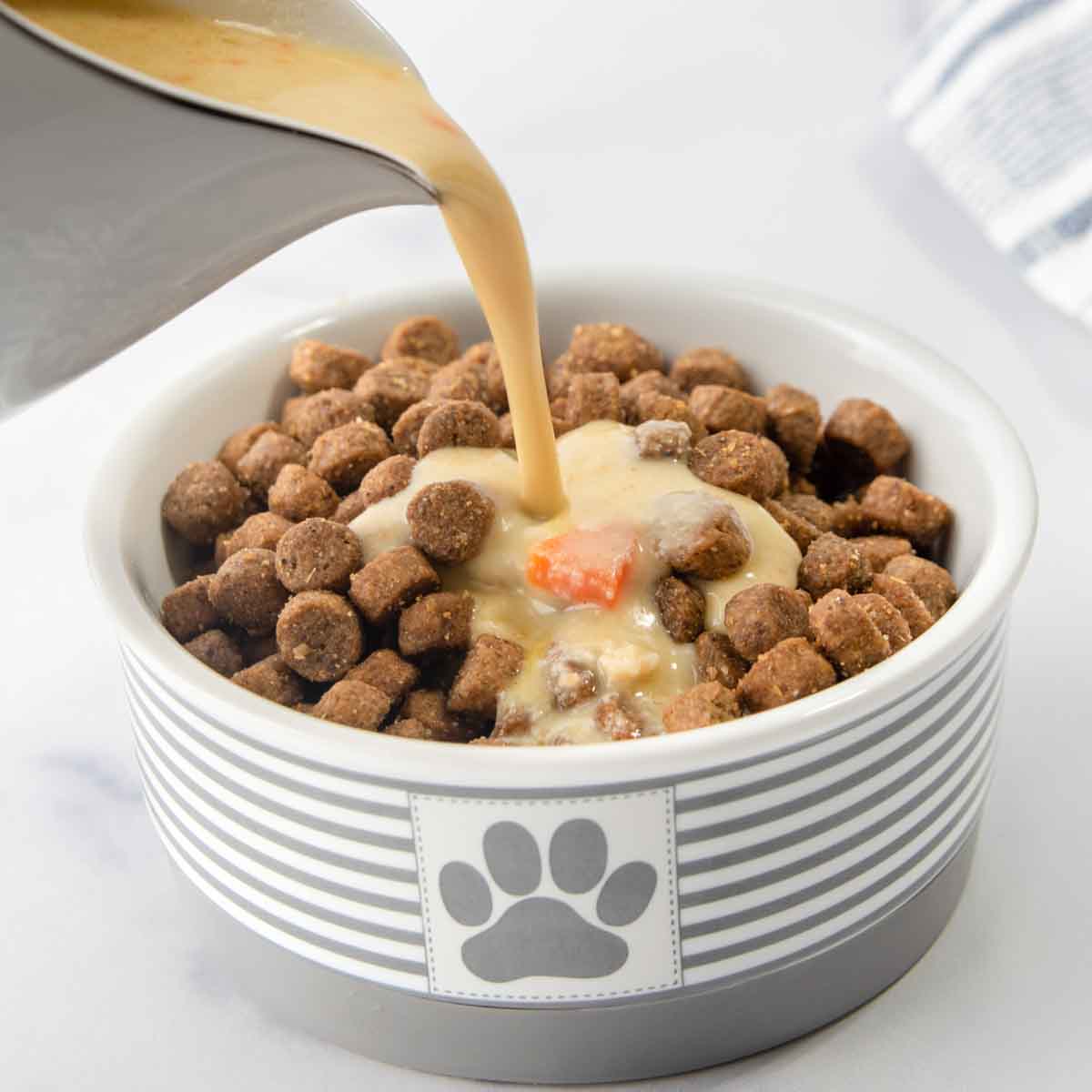
FYI This post contains affiliate links. As an Amazon Associate, I earn from qualifying purchases.
Making Gravy for Dogs
Dog owners are always looking for ways to improve their dogs food and make it tastier. We love them, so of course, we want them to enjoy their food! Plus, lets face it, dry kibble isnt the tastiest thing in the world for our canine companions.
Thankfully, this is one of the easiest and healthiest gravy recipes that you can share with your dog. This homemade gravy is a great way to make their dog food taste better (and be healthier for them).
Why This is the Best Dog Gravy Recipe
This is the best gravy for dogs because it makes every dinner feel like one of those special occasions! Easy recipes like this are great for you because they take no time at all. Plus, you can change this recipe and use other dog-friendly veggies (like green beans).
This is a flavorful gravy that only takes small amounts to improve your dogs dry food. Use it as a special treat or as daily dog food toppers. Commercial foods are low on taste, and wet food is pricy, but this gravy is a good idea because its low-cost and good for your pet.
If your furry family members dont eat their dry dog food, try to cover it in homemade dog food sauce. These tasty toppers are made with lean meats and are fantastic for dogs with sensitive stomachs.
Dog Gravy Ingredients
The entire ingredient list, quantities of each, and the step-by-step directions are in the printable recipe card at the bottom of this post. First, I want to share some additional information about the ingredients I used in this dog gravy:
- Coconut Oil is a healthy fat for cooking meat.
- Ground Chicken is a great source of protein.
- Carrots are a healthy vegetable loaded with beta-carotene.
- Green Peas are protein-rich and have fiber and essential vitamins.
- Chicken Stock without salt, onions, and garlic.
- Corn Starch or Arrowroot Powder is the thickener for the gravy.
- Water for a liquid to mix with cornstarch to thicken the gravy.
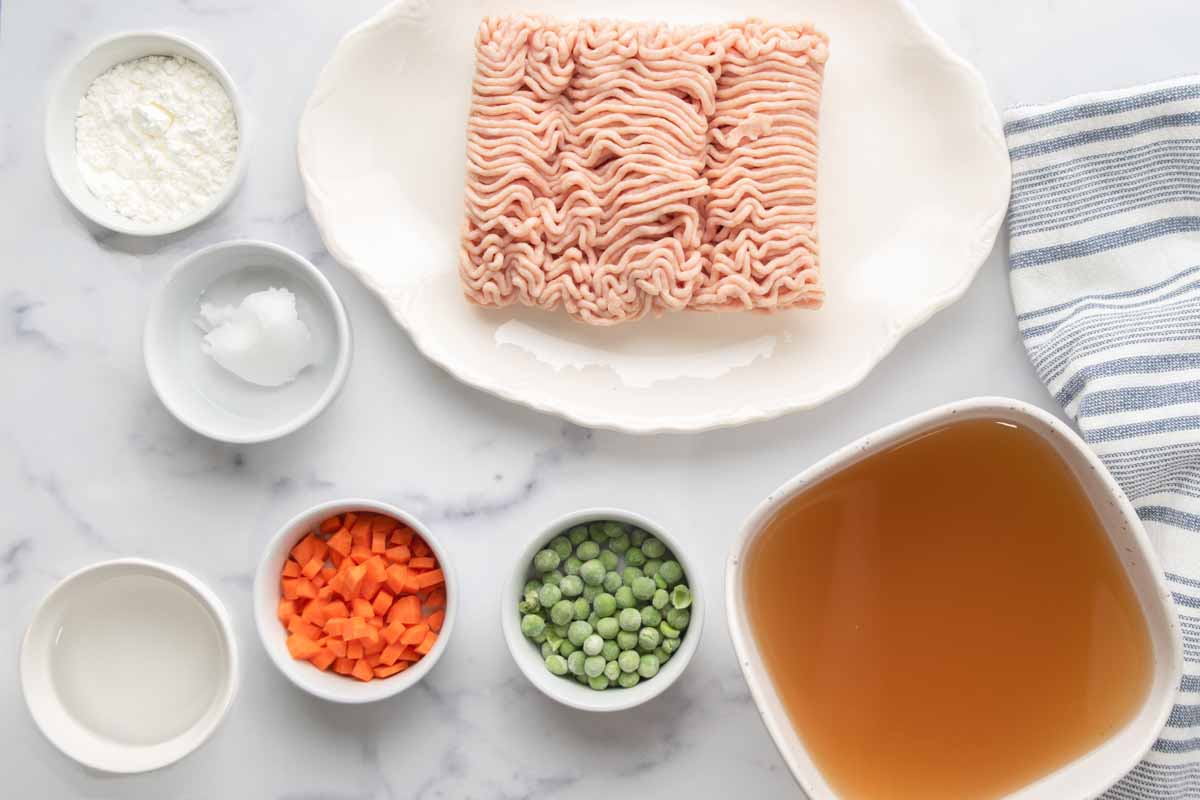
Ingredient Notes and Substitutions
- You can substitute olive oil for coconut oil.
- You can use ground turkey, extra lean ground beef (95/5 or 90/10), or chicken liver instead of ground chicken.
- You can use turkey or beef stock instead of chicken broth stock. Be sure to use stock without salt, onions, or garlic. Homemade bone broth stock is great!
- You can substitute any dog-safe fresh vegetables for carrots and peas.
Equipment Needed
You probably have all the equipment needed for making this dog gravy recipe. Just in case, here are a few of the important ones:
How to Make Dog Gravy
These are the recipe steps and photos of the process of making the gravy. I hope they help you make this healthy dog gravy recipe!
You can scroll down to the bottom of this article for a printable recipe card.
- Melt oil in a large frying pan or skillet over medium-high heat.
- Add ground chicken to the skillet and cook, stirring to break up the meat, until it is fully cooked and crumbled.
- Add stock and vegetables to the skillet. Cover and simmer for 10 minutes over low heat.
- For chunky gravy, use a slotted spoon to take out a cup of cooked meat and vegetables.
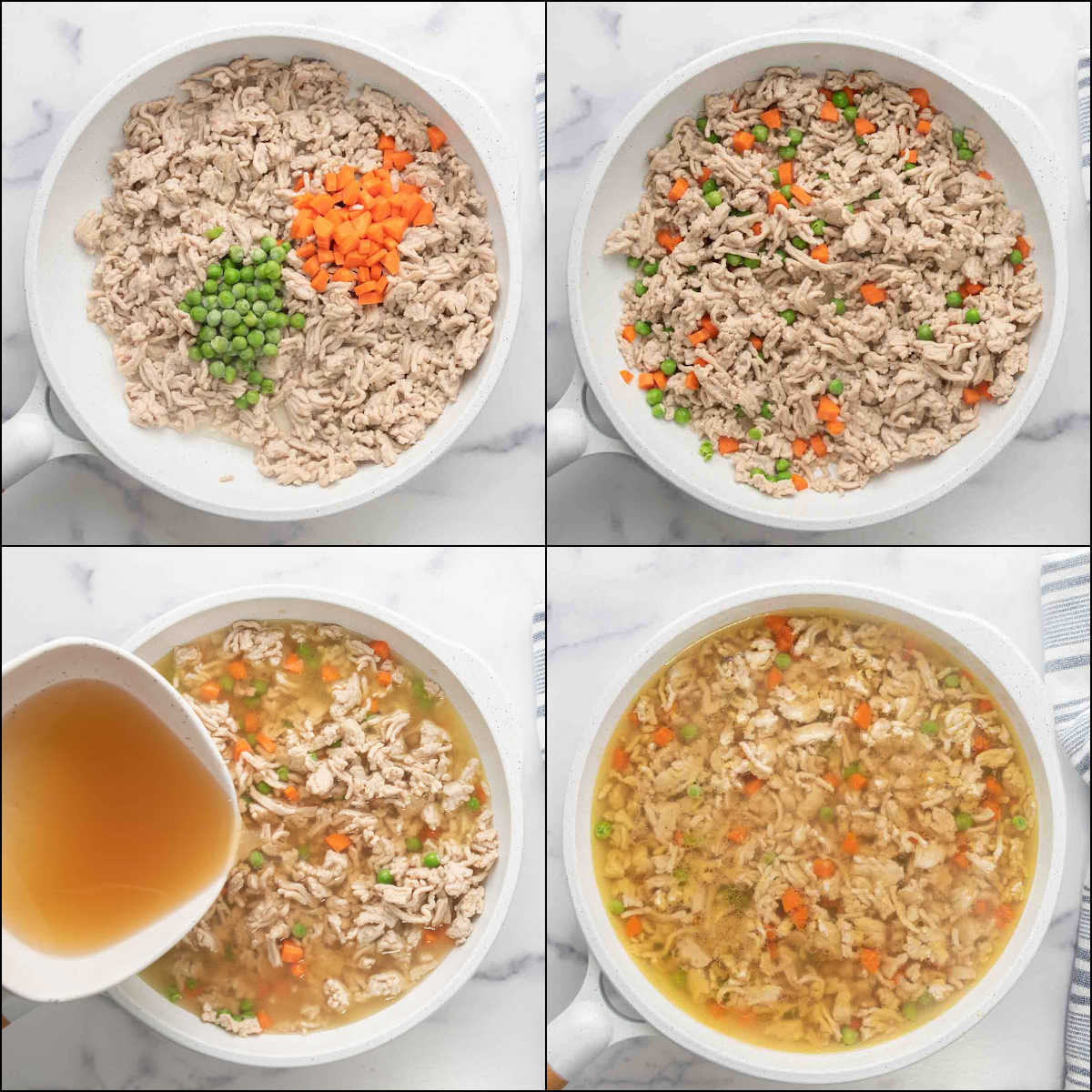
- Mix cornstarch with cold water to make a slurry.
- Slowly add the slurry to the gravy mixture stirring while adding it.
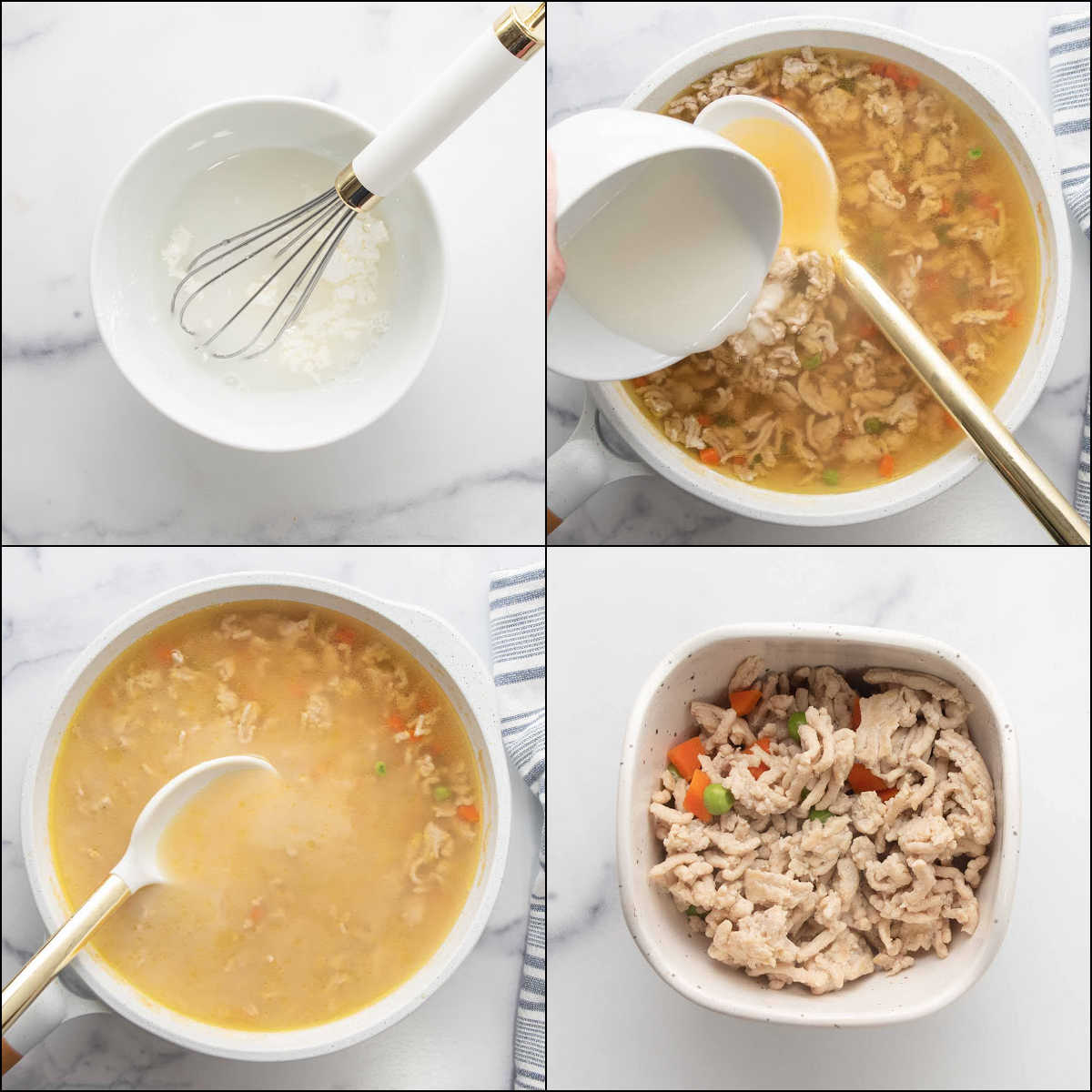
- Remove the gravy from the heat and let it cool to room temperature.
- Transfer the mixture to a blender or food processor and blend it until smooth.
- Add the reserved meat and vegetables back to the blended gravy.
- Serve over your dogs food.
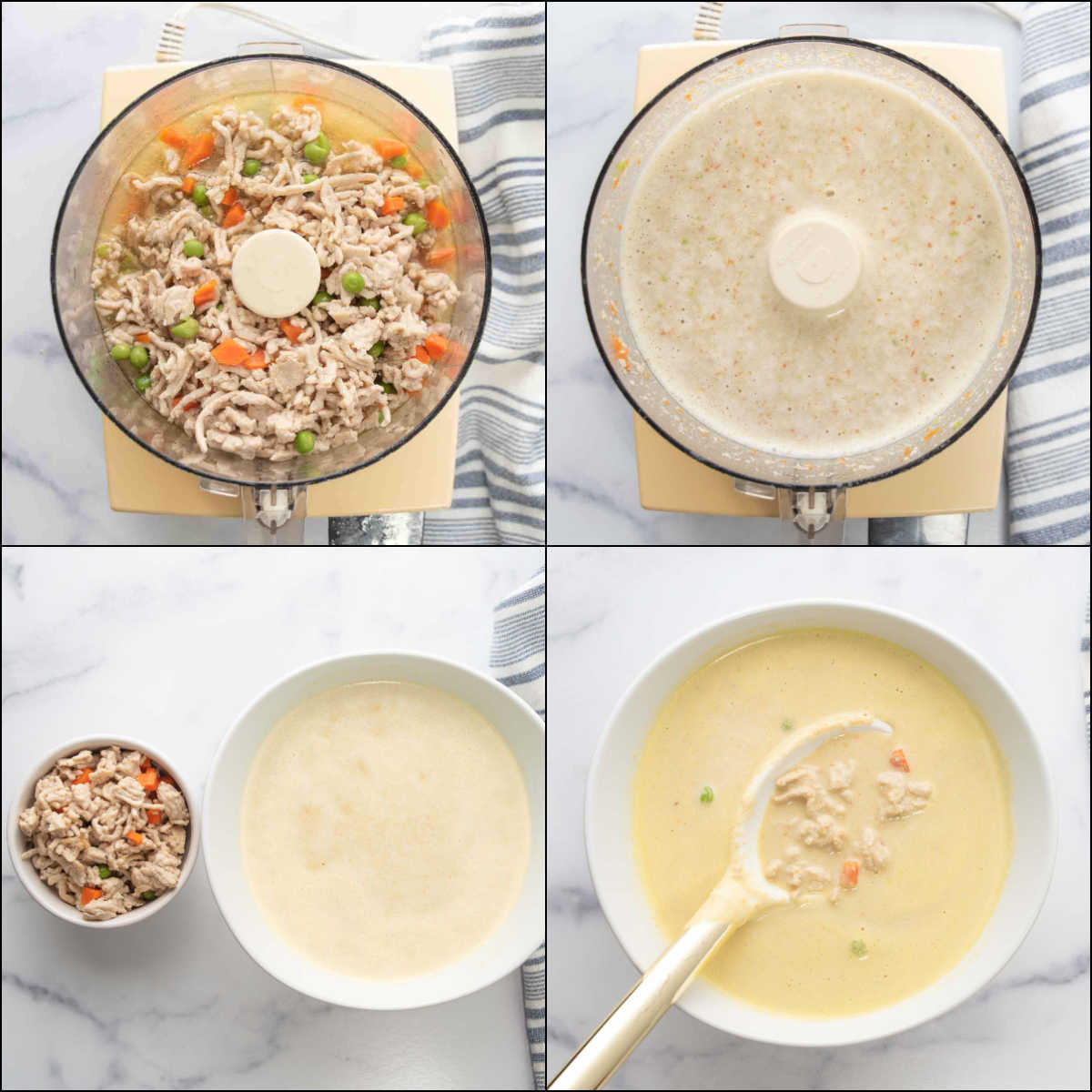
Serving Size
How much gravy to pour over dog food? A general serving would be 1/4 cup but that can vary. You may just need to put a little bit of gravy on your dogs food or enough gravy to soften dry dog food.
It also depends on your dogs size. Small pets require fewer calories than larger ones. Maintaining a dogs healthy weight is very important. Keep that in mind when feeding dogs and adding any topper to their food.
How to Store
Store this meaty gravy in an airtight container in the refrigerator. It will last up to 7 days.
You can freeze it for longer storage. Put it in a freezer-safe container or portion it out in small containers or freezer bags. You can also pour it into an ice cube tray, freeze it, then transfer the frozen cubes to a plastic freezer bag. Frozen gravy will last up to 3 months.
When ready to use, thaw it in the refrigerator overnight. Dog gravy can be served cold, at room temperature, or slightly warmed on the stove or in the microwave. Be careful and not heat it too much because hot gravy can burn your dogs mouth.
Can humans eat this gravy for dogs?
Yes, absolutely! It would be yummy on mashed potatoes. Folks would want it seasoned a bit with salt and pepper.
Pin this to save and share
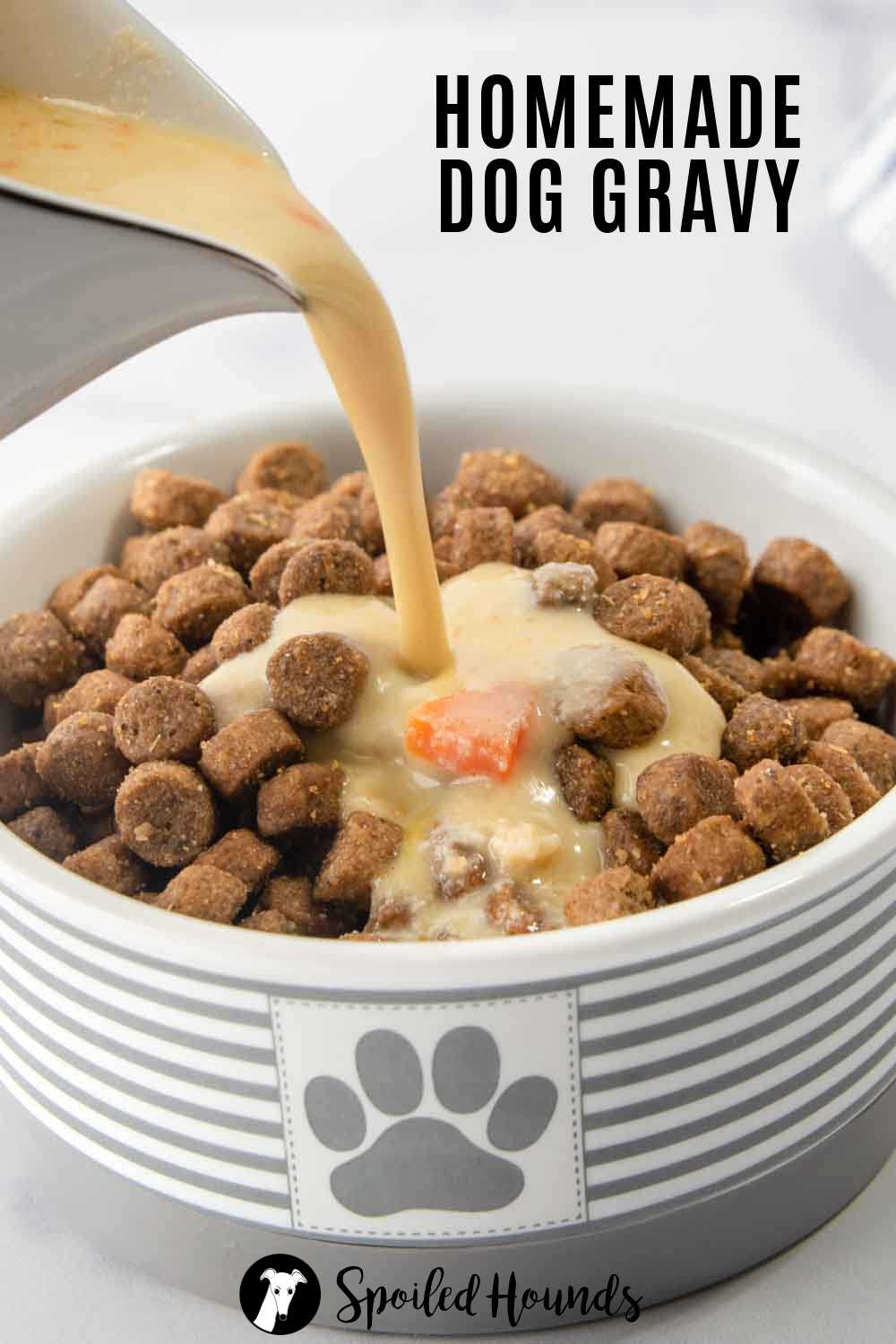
More Dog Treat Recipes
Want to make more goodies for your dog? Check these out:
Not in the mood for making homemade dog treats? Check out myfavorite dog treatson myAmazon dog treatslist.
Find lots ofeasy dog treats recipeshere on Spoiled Hounds!
Homemade Dog Gravy
Homemade dog gravy is a tasty dog food topper for your furry friend.
Prep Time 10 minutes minutes Cook Time 20 minutes minutes Total Time 30 minutes minutesIngredients
- 1 tablespoon Coconut Oil
- 1 pound Ground Chicken
- cup Chopped Carrots
- cup Frozen Green Peas
- 3 cups Chicken Stock
- 2 tablespoons Cornstarch or Arrowroot Powder
- cup Cold Water
Instructions
Melt coconut oil in a skillet over medium-high heat.
Add ground chicken to the skillet and cook, stirring to break up the meat, until it is browned and crumbled.
Add stock, carrots, and peas to the skillet. Cover, reduce heat to low, and simmer for 10 minutes.
If you want the gravy to be chunky, take out about a cup of the meat and vegetables and set aside.
Mix together the cornstarch (or arrowroot) with the cold water.
Slowly add the cornstarch slurry to the gravy mixture stirring while adding it.
Remove the skillet from the heat and allow the gravy to cool to room temperature.
Transfer the mixture to a food processor or blender. Blend until smooth.
Add the saved meat and vegetables back to the blended gravy.
Serve over your dogs food.
Notes
You can substitute the ground chicken with ground turkey or ground beef.You can substitute the chicken stock with beef stock.Nutrition
Calories: 70kcal | Carbohydrates: 3g | Protein: 6g | Fat: 4g | Saturated Fat: 2g | Polyunsaturated Fat: 1g | Monounsaturated Fat: 1g | Trans Fat: 0.02g | Cholesterol: 26mg | Sodium: 83mg | Potassium: 207mg | Fiber: 0.2g | Sugar: 1g | Vitamin A: 353IU | Vitamin C: 1mg | Calcium: 5mg | Iron: 0.4mg
What to Mix With Dry Dog Food? Healthy Dog Tips
It can be hard to eat the same thing, day in and day out. Sometimes it is good to change things up once in a while. I am not talking about you, but your doggie.
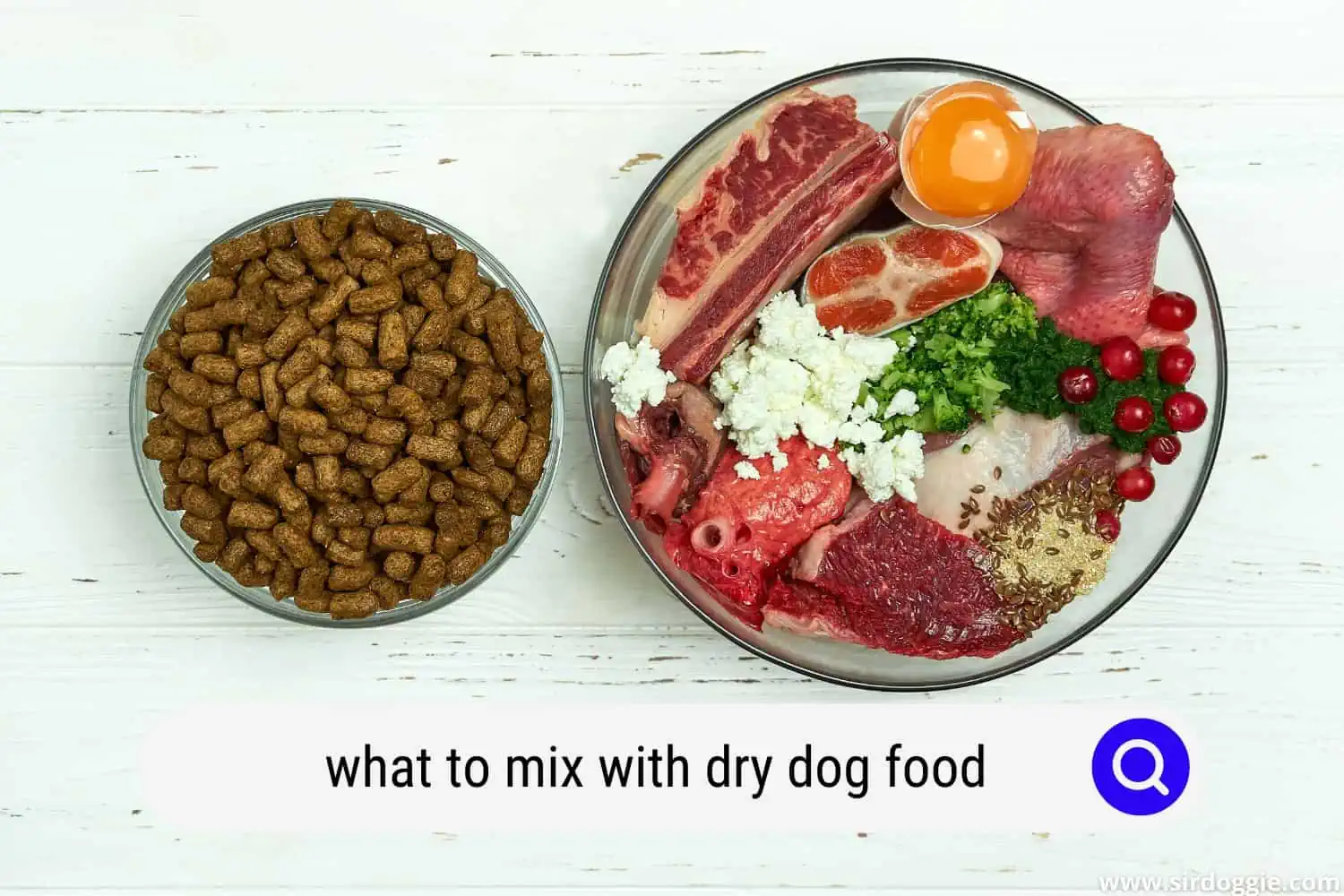
Adding a little spice to their lives, or rather, more taste to their regular doggie food can help break up their sometimes mundane daily diet.
What to mix with dry dog food? Here are some healthy foods you can add to your dogs dry food to make it more enjoyable for your doggie:
- Eggs
- Brother
- Yogurt
- Fruits
- Vegetables
- Rice
- Oatmeal
There is such a wide variety of foods that can be added to a dogs dry food that the list is nearly endless, though there are a few precautions that should be taken.
We wanted to share with you some of the things that dogs like to eat that you can use to spice up their dry dog food. Keep in mind, however, that like humans, dogs have their individual tastes (and hopefully you know them best).

Related Reading: Wet Dog Food vs Dry, Which One is Better?
Best Foods to Mix With Dry Dog Food
There is such a wide range of things that dogs can eat, and I will get to the list of things to avoid as well, some of which may surprise you.
But first, lets take a look at some of the benefits of adding real and wholesome foods to your dogs diet.
Proteins
For added protein, you can add things like chicken, eggs, or tuna. Each should be prepared appropriately.
- Eggs: You can feed a dog soft boiled, fried, or scrambled eggs, but you should not add oil, butter, or salt to the eggs. Just plain egg! Dogs do not need any added fats in their food and salt can be hard on their kidneys. A soft boiled egg is optimal as it cooks the egg white making it easier to digest but leaves the yolk uncooked.
- Chicken: Raw chicken is usually best to avoid due to the risks of Salmonella contamination. In theory, raw meat from chickens that have been vaccinated against Salmonella would be safe for your doggie, but it is likely not worth the risk. Try to stick to cooked and broken up pieces of chicken. You can also consider adding chicken broth to your dogs dry food to help soften the dry food to mix it in better.
- Tuna: Canned tuna is fine for dogs in moderation. Just remember to buy the in water tuna for dogs as that extra oil can mess with sensitive tummies. For an added taste bonus, drain the can into their bowl with the tuna and let it soak into the dry food. Heating it up will make your house smell like tuna, but will make the aromatic food that much more appealing to your doggie.
Dairy Items
As the American Kennel Club points out, dairy items can be an issue for dogs that are lactose intolerant. Not all dogs are, so this is something that you need to determine before you feed them dairy products (and it may be wise to consult with your veterinarian).
While gassiness may be one give away that your doggie is lactose intolerant, some dogs are naturally gassy, so it is not a guaranteed sign.
If your dogs stool becomes very loose after eating dairy, then this may be a sign that dairy is not an ideal option for them.
If your doggie is able to tolerate dairy in moderation then here are some great dairy options for your dog:
Yogurt: This is a yummy treat that many dogs enjoy and it can easily be mixed in with different kinds of dry dog food. The key is to mix it in and you should avoid just pouring it on top and leaving it like that because some dogs may just eat the yogurt and ignore the dry food.
That is not to say some dogs wont just lick off the yogurt and spit out the food, but there is certainly a lesser chance of it.
Cheese: There are a few things to keep in mind with cheese. First, when giving your dog cheese, you need to make sure it is real cheese. This means no processed cheese products like those American slices wrapped in plastic or those large bricks that dont even need to be refrigerated.
Also, you will need to cut it small and mix it into the food. Otherwise, it will just be the treat on top that they will ignore the dry food to eat.
Cottage Cheese: Small curd is better and makes sure it is mixed in so most of the whey (the liquid) is covering the dry food. Most dogs love cottage cheese, but make sure that they are eating dry food with it.
When mixed in, cottage cheese can offer a bit of change to their routine and add some extra calcium for growing bones in puppies.
Fruits and Vegetables
Different fruits and veggies can offer different benefits to your dog in the form of vitamins and minerals. Before you begin adding any fruit or vegetable to their food, make sure it is safe as there are a few on the list that are not.
While dogs can eat most of what we can, I have included a list of the safer to avoid types of food at the bottom of this post.
Another thing to verify before adding new food to their diet is if they will even like it. Fruits and veggies are where individual taste will really rear its head. Some dogs like peas, some like carrots, and some like neither.
Before adding the food to their food dish, let them try it at least 3 to 4 different times in isolation. This will allow enough time for them to determine if it is palatable to them or not.
In nature, dogs will try food and then see how it makes them feel. If they get sick afterward, they may never eat that food again, no matter what they thought of the taste, so go slow and small when introducing new foods.
While most dogs are willing to eat some things raw, others may not, as the raw form may be too hard to eat (especially for smaller breeds), or it may be unhealthy for them to raw.
Things like sweet potatoes and other starches need to be cooked first, but other vegetables will mostly depend on the preference of your dogs.
Healthy Grains
Grains like rice and oatmeal can be very healthy and a nice addition to a doggies food dish. You can add other flavours in the form of liquids as well to enhance the flavour.
Fruits can pair nicely with a little oatmeal, white rice can be cooked with a broth to add in extra flavour, vitamins, and minerals, and left soupy to help soften the food (a great trick for older dogs with sensitive teeth).
Always cook grains before feeding your dog. It can make it hard to digest otherwise and potentially make them sick.
Instant oatmeal only needs to be cooked for a minute or two and can be a great way to add in some flavour. Dogs dont need the added sugar we need (well, not that we really need it), so you can just have soupy oatmeal left to soak into the food, add it hot, let it cool and then serve.
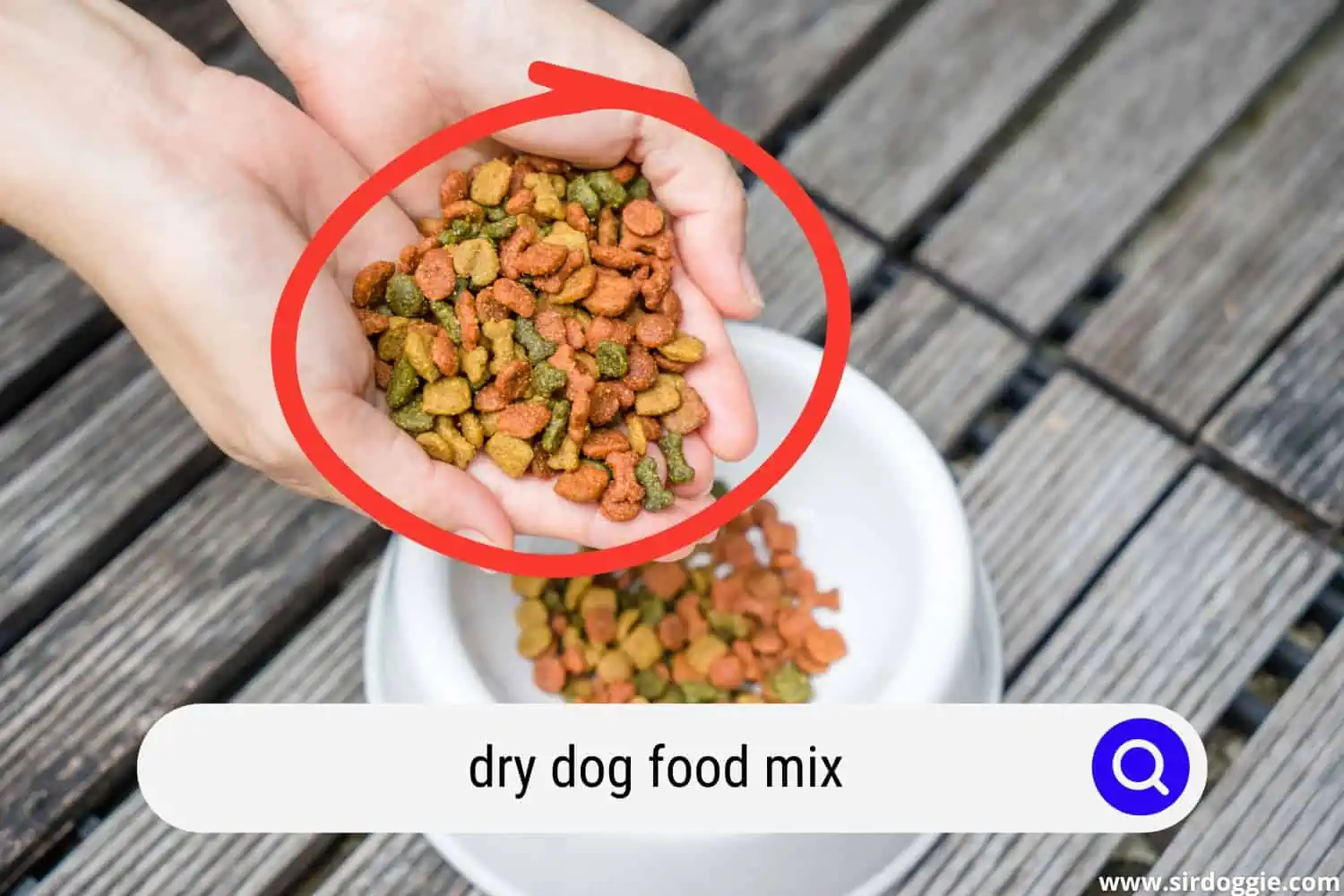
Foods to Avoid Adding to Dry Dog Food
Certain foods can be dangerous to dogs and should be avoided if possible.
Chocolate: Most people know about this one, but not necessarily why it should be avoided for dogs. Chocolate contains theobromine, which is a good chemical for us.
It is part of what we crave when we crave chocolate. However, our bodies can process it much better than a dogs system can. Darker is worse, dark chocolate can kill a dog easier than milk chocolate can.
And remember to take extra precautions around the Holiday times as its easy to forget and leave chocolate out.
Grapes: For the same reason that grapes and wine can be heart-healthy for humans makes it dangerous to dogs. Grape skins contain a substance that acts like a blood thinner in the mammalian body.
For humans, it is such a small amount, and our bodies process it quickly that it is safe. Like with chocolate, too much can kill doggies, so its best to avoid it.
Garlic and onions: While a small amount once in a while probably wont do much, a large amount of consistently small amounts over a longer period of time can start to destroy red blood cells leading to anemia, at the very least.
If you are feeding treats off your plate, you dont have to worry if they accidentally get some, but be cautious that it is not a large amount or too often. Also, certain breeds of dogs are more sensitive to garlic and can have more severe reactions.
Artificial Sweeteners: This is one that many pet parents arent aware of. While some artificial sweeteners are perfectly safe for dogs, there is one, xylitol, that can kill before you even realize your dog is sick.
This is why it is best to prevent your doggie from ingesting anything that contains artificial sweeteners in it. This can include things like peanut butter, gum, and some yogurts.
Additives: Things like salt, alcohol, or caffeine are not good for dogs and should be avoided whenever possible. NEVER add any of these items into food meant for your dog and be aware of how much they are eating from food prepared for humans.
Raw meat: Pork can contain parasites, and chicken can be contaminated with Salmonella. Both of which are killed by cooking it thoroughly. Although raw dog food diets have become increasingly popular, its best to proceed with such a diet under the guidance of a veterinarian.
Final Thoughts
This list and post were meant to be informative in nature and should not replace expert veterinarian advice.
As pet parents, its up to us to ensure we are well-informed when making decisions for our doggies. I hope this list has helped clear up some of the dos and donts when it comes to mixing in foods to your dogs dry food.
Family Dog Expert Author
Hi there! Im Stuart, a devoted dog lover and family dog expert with over a decade of experience working with our furry companions. My passion for dogs drives me to share my knowledge and expertise, helping families build strong, loving bonds with their four-legged friends. When Im not writing for SirDoggie, youll find me hiking, playing with my beautiful dog, or studying music.

